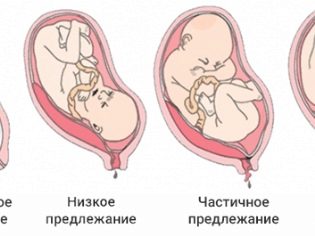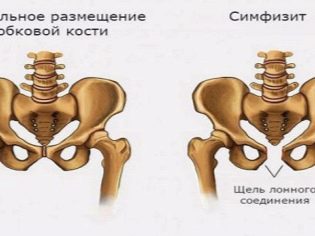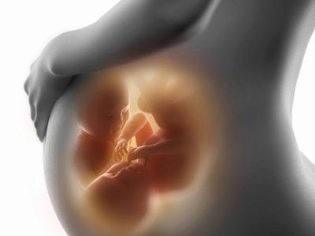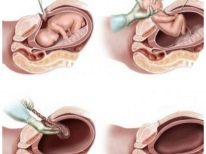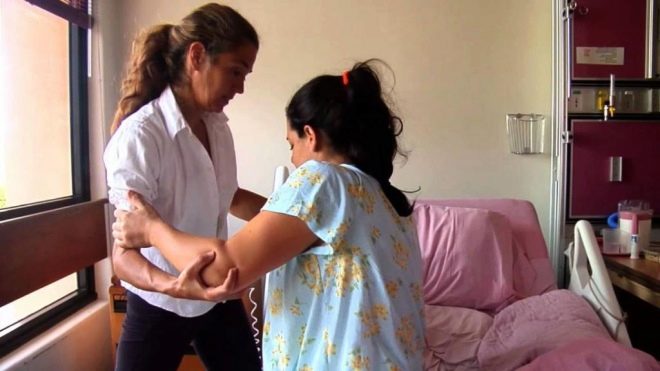How long do a planned caesarean section and how does it go?
Caesarean section is a popular operation today. Back in the 70s of the last century, the total share of operative labor was no more than 2%, and now it has grown to almost 20%. Every fifth baby is born by caesarean section. This is connected with the ecological situation, and with the fact that women have become less mobile, weaker than 40-50 years ago, the proportion of IVF has increased and more and more women think about offspring for the first time after 35 years. Therefore, a planned caesarean section does not surprise anyone.
In this article we will talk about how and when a cesarean section is performed, what are the features of a planned operation.
Types of operations and indications for it
Caesarean section - a cumulative operation, which involves removing the baby and the placenta through an incision in the abdomen. The operation can be carried out urgently - for health reasons and unforeseen circumstances that have arisen suddenly and made the physiological birth impossible or extremely dangerous. In a planned manner, the operation is carried out in case of detection of circumstances that are direct or relative indications for operative delivery even during pregnancy.
Planned cesarean differs from emergency lack of haste, the presence of careful preparation. Complications after a planned operation occur less frequently. Also, different types of surgery imply different indications. If emergency caesarean section is done mainly with weakness of labor forces, lack of effect from stimulation in one of the stages of the beginning physiological labor, with placental abruption before the term or during acute hypoxia of the fetus that threatens the baby’s life, the indications for a planned operation are more extensive.
Planned cesarean do in the following cases.
- "Children's place" is located below the normal level, there is previa. The placenta closes completely or fragmentary inner throat, there is a high probability of bleeding.
- A scar on the uterus, remaining from a previous cesarean or other operation on the uterus, can be dangerous in terms of the possibility of uterine rupture in labor.
- Wealthy scar, but two or more cesarean in history.
- Obstacles that can be considered mechanical. Normal delivery will be hindered by a narrow pelvis of the woman in labor, injured or deformed bones and joints of the pelvis, tumors of the uterus, ovaries, multiple polyps.
- The discrepancy of the pubic bones - symphysitis.
- A fetus that is unsuitable for physiological births (pelvic, oblique or transverse, as well as the buttock-and-foot position of the baby relative to exit from the uterus), an aggravating factor is the estimated large weight of the fetus (more than 3600 g).
- Pregnancy is twins, if one of the children is in the wrong position before the baby is in the pelvic position or the baby is closer to the exit of the uterus.
- Pregnancy of monozygous twins, if the children are located inside one fetal bladder.
- Pregnancy (including multiple pregnancy), which became possible as a result of a successful therapeutic cycle of in vitro fertilization.
- Injured cervix, scars on it and in the vagina after previous heavy labor.
- Severe developmental delay of the fetus, a significant lag in the development of the crumbs in time.
- Postponing a pregnancy - after 42 weeks, if the stimulation was ineffective.
- Severe preeclampsia.
- Diseases of the mother, in which it is strictly forbidden to push - myopia, cardiovascular problems, a transplanted kidney.
- The state of chronic oxygen starvation in the fetus.
- Herpes genital type.
- Problems with hemostasis in a woman or a child.
- Some malformations of the fetus.
At the request of a woman in labor, caesarean section in Russia is done only in some paid clinics. Elective caesarean section can cost about half a million rubles. Free, that is, under the policy of compulsory medical insurance, the operation is carried out by the maternity hospital, perinatal centers only if there are valid medical reasons for which surgical births are more optimal than physiological ones. This is associated with a high risk of complications, which women and children will not be exposed to if the potential risk exceeds the potential benefits of the intervention.
When do?
Given that doctors need to collect as much information as possible about the condition of the future mother and her baby, the decision on the need and timing of a cesarean section is routinely made at 34-35 weeks of gestation. This primarily refers to situations in which the baby is located in the uterus in the pelvic or other abnormal presentation, when it is necessary to determine its intended weight. If during pregnancy from the first months there are certain indications, for example, there are coming third or fourth surgical delivery, the issue with the appointment of the operation is not raised, it is solved by default.
There is an opinion that cesarean, which is started to be done after a woman starts independent fights, is more natural and close to physiological labor. Experienced and prudent surgeons prefer to perform the operation before the onset of regular labor pains. The calmer the uterus muscles, the less likely the postoperative complications are.
The Russian Ministry of Health prescribed a scheduled operation after 39 weeks. Theoretically, the baby is viable earlier, after 36-37 weeks, but in practice there are risks of respiratory failure due to the possible small amount of surfactant in the lungs. Therefore, during the first birth, an operation is performed for a period of 39-40 weeks. Repeated QS can be held at week 39, and the third at 38-39 weeks. The difference is due to the fact that subsequent gestation of the fetus with a scar on the uterus is associated with increased risks of scar discrepancy at the latest dates, the probability of an early onset of labor is higher.
The date of the operation is determined not only with the interests of the future mother, but also with the interests of the child.
If there are signs of his trouble, the timing of planned surgical delivery may well move a few days earlier. Planned operations are not performed on weekends, even if the patient gives birth for a fee, until the contract for the provision of paid medical services.
Change the estimated date of the operation may for various reasons. In particular, the intervention can be carried out earlier, if a woman shows signs of cervical readiness to start labor, if a cork mucous discharge or amniotic fluid leaks, if there are warning signs of a threatening rupture of the old scar on the uterus, if the woman’s condition has deteriorated , if the baby has an oxygen deficiency, CTL and umbilical cord around the neck.
The patient receives a referral to the maternity hospital in the antenatal clinic. 38 weeks pregnant, because hospitalization before the planned operation is made in advance.
Preparing for surgery
Before planned surgical delivery, a woman is placed in the maternity hospital at 38-39 weeks of gestation. Going to hospital is necessary in order to prepare for the upcoming operation as best you can. Training at the maternity hospital will include another general examination - blood and urine tests, ultrasound, CTG.
A woman must make a coagulogram - a blood test for clotting factors. This is important for planning an operation. She also has to talk with an anesthesiologist when she has to decide on the type of anesthesia. A bag that a woman assembles in advance at the maternity hospital must, before a cesarean section, contain a set of elastic bandages for bandaging the legs to avoid thrombosis during surgery and after it, or compression stockings for the same purposes. You can take a disposable machine, it is useful on the day of the operation.
In the morning, a woman is raised early, an enema is done to clean the intestines (this will help you to reduce the uterus more quickly), and shaving of the pubis to prevent the hair from getting on the wound surfaces. Scheduled operations begin in the morning.
Anesthesia
Anesthesia can be of three types. Epidural and spinal anesthesia have recently become the most common. With these methods, anesthetics and muscle relaxants are injected into the epidural space of the spinal column or into the subarachnoid space of the spine. For the injection, the anesthesiologist uses a long, thin needle; the injection is carried out while sitting or lying on its side. The puncture site is the lumbar spine. The needle must enter between the vertebrae. Anesthesia occurs within 15 minutes with epidural anesthesia and almost immediately with spinal anesthesia.
Numbness and loss of sensation in the lower body. Doctors can proceed with the operation, and the anesthesiology doctor leaves a catheter at the lumbar puncture site, through which, if necessary, additional doses of painkillers can be administered if the operation is delayed. A woman is fully conscious, she can communicate with doctors, see a wonderful moment - the appearance of a crumbs into the world, and also have the opportunity to immediately put the baby to the chest right on the operating table.
General anesthesia involves the immersion of a woman in a deep sleep medication. In the operating room, she is injected with an intravenous anesthetic, she is immersed in sleep, after which she is injected with a tracheal tube and connected to an artificial respiration apparatus. Preparations for the maintenance of narcotic sleep can be given in a vapor form through a tube, and can be administered intravenously through a catheter left there. A woman will not be able to see or hear anything in a state of general anesthesia.
General anesthesia is prescribed when there are certain contraindications to epidural or spinal, and also in those cases if the woman herself insists on a deep medication sleep during the operation - not everyone likes to hear and observe how the surgeons work.
Performance technique
They try to do a planned operation with the least damage to the beauty of the female body. The incision is made horizontal, its length does not exceed 10 centimeters. The cut line runs parallel to the pubis. After an incision of the skin, adipose tissue, and muscle tissue of the aponeurosis, the surgeon must protect the muscles and bladder from possible accidental injury with a scalpel during manipulation of the uterus. He pulls them to the side and fixes the clips.
The uterus is dissected in the lower uterine segment. This segment stretches the least, and therefore preserves the prospect for a woman to become a mother several more times. Having opened the uterus, the doctor opens the fetal bladder, drains the amniotic fluid, grabs the baby’s head in the back of the head and gently pulls the baby into the light. The umbilical cord is cut.
Then manually place the placenta and stitches in reverse order. First - on the uterus, then on the muscle tissue. Last of all, the skin on the stomach is sutured.From the moment the operation starts to its end in normal mode, it usually takes less than 40 minutes
Features re-operation
Repeated surgery may take a little longer than the first. This is due to the need to excise the old scar on the uterus and the formation of a new suture. The fact is that subsequent surgical delivery is carried out along the line of the old scar. This rule is valid in 99% of cases, only sometimes it is necessary to retreat from it, if there are certain reasons.
In the second birth or third cesarean section, some women agree to bandaging the fallopian tubes to eliminate the likelihood of a subsequent pregnancy, since each next proceeds with increasing risks. This procedure adds to the time of the operation about 10 more minutes, so repeated surgical deliveries can last up to 50-60 minutes.
Rehabilitation
Much in the further well-being of the newly-made mother will depend on how well the rehabilitation will be organized. In the first hours after the operation, the woman in labor is in a special intensive care ward, where doctors carefully watch her. Everything is important - how a woman will come out of anesthesia, what will be blood pressure, body temperature, how quickly the reverse involution of the uterus (contraction) will begin.
Already in the intensive care unit, women are beginning to receive contraction drugs, the task of which is to strengthen the uterine contractions. It is mandatory to give painkillers, antibiotics may be prescribed, if doctors have reason to assume a high risk of developing postoperative complications.
After 5-6 hours, the woman is transferred to the general ward. There, in another couple of hours, she can begin to roll over on her side, sit down, gradually get up and take the first steps. The sooner the puerperal rises and begins to move moderately, the better for uterine contraction, for faster recovery.
Welcome early attachment of the baby to the chest. The sooner the baby begins to suck on it, the faster the hormonal balance in the woman’s body will be normalized, oxytocin will be produced more actively, the better the uterus will contract.
In the first three days, a special diet is prescribed for the woman. On the first day, only water without gas, the next day - broth, jelly, sugar-free compote, white homemade croutons without spices and salt. On the third day, you can eat porridge, vegetable puree. On the fourth day, the woman is transferred to the common table, but it is recommended to avoid foods that can cause constipation, gas accumulation in the intestines, and bloating. Discharged after elective caesarean section in the absence of complications on the fifth day. A woman removes stitches in female consultation at the place of residence for 7-8 days.
Reviews
According to the reviews of women who left on the Internet on the pages of thematic forums, a planned cesarean section is a good way to choose the date of birth of your own baby. If there is no indication for a shift in time, a woman is given this opportunity, limiting it to one week. Knowing when a baby will be born, makes it possible to choose a name in advance according to the Sacred Monastery, as well as morally and physically prepare for this important event in the life of the family.
Women who have a caesarean section according to the plan, it is important to pre-select the maternity hospital or perinatal center where she would like to be operated. After that, in the selected maternity hospital, you need to sign the exchange card with the head doctor or his deputy for the medical part (chief medical officer). Then, no matter what happens while waiting for the date of hospitalization, the Ambulance will deliver the patient to that hospital, which will be indicated on the exchange card. Otherwise, it may go to another obstetric institution, which will be on duty.
Quite often, women who are going to have the first planned delivery wrap themselves up to neurosis — they watch a video of the operation, read about its possible complications and a terrible exit from anesthesia.After their own experience is left behind, most admit that the rumors and fears were clearly exaggerated. Modern medicines do not make anesthesia heavy and painful, getting out of it is easier, even if they did general anesthesia.
By the way, opinions about the choice of anesthesia are also ambiguous. Many women prefer a common one, because they already have experience of epidural and know that with him not all sensitivity disappears, and listening to the conversations of doctors and the clanging of instruments is not at all pleasant. A big plus of a planned operation is the postoperative suture, which in six months is reduced to 4-5 centimeters, brightens and becomes almost invisible.
In an emergency operation, the seams are less neat, in addition, the operation can be carried out in a corporal way - a vertical incision from the navel to the pubis. It will be impossible to hide such a scar behind the elastic of cowards, and complications are more common.
Experienced mommies advise a woman who is just preparing for a CS to discuss in advance with the doctor all the nuances of the upcoming operation and ask all the questions. Then the excitement will be less.
For information on when it is recommended to do a cesarean section, see the following video.



